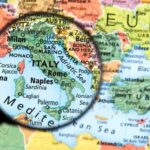Italy has long been a dream destination for travelers around the world. However, in the wake of the COVID-19 pandemic, Italy, like many other countries, has implemented stringent travel restrictions to protect the health and safety of both its residents and visitors.
As we navigate through these uncertain times, it is crucial to stay informed about the current travel situation in Italy. This article aims to provide an overview of Italy’s travel restrictions, entry requirements, testing and vaccination guidelines, regional variations in restrictions, quarantine and isolation protocols, exceptions to the limitations, and tips for planning your trip while staying compliant with these regulations.
Within this article, you will find essential information about what travelers need to know before planning a visit to Italy. From understanding Italy’s color-coded tier system and its implications for travel to learning about quarantine guidelines upon arrival, we aim to equip readers with the necessary knowledge to make informed decisions regarding their trip. Additionally, we will explore travel insurance considerations and provide insights into potential changes or updates in Italy’s travel restrictions.
In order to make the most of your trip amidst these challenging times, it is vital to have a comprehensive understanding of Italy’s current travel situation. By staying informed and prepared before embarking on your journey, you can ensure a safe and enjoyable experience while exploring all that this beautiful country has to offer. So let us delve deeper into Italy’s travel restrictions and uncover how they may impact your upcoming adventure.
Overview of Italy’s Travel Restrictions
Italy, like many countries around the world, has implemented travel restrictions in response to the COVID-19 pandemic. These restrictions are constantly being updated based on the current situation and as new information becomes available. In this section, we will provide an overview of Italy’s travel restrictions and give you a brief update on the entry requirements.
To enter Italy, travelers must meet certain entry requirements. As of now, all travelers must present a negative COVID-19 test result taken within 48 hours before their arrival in Italy. The accepted tests include rapid antigen tests or molecular (PCR) tests. Additionally, travelers are required to fill out a self-declaration form stating their purpose of travel and agreeing to comply with the quarantine measures in place.
It is important to note that there are some exceptions to these entry requirements. For example, travelers who have been fully vaccinated against COVID-19 may be exempt from presenting a negative test result. However, it is essential to check the specific requirements based on your country of origin before planning your trip.
| Entry Requirement | Description |
|---|---|
| Negative COVID-19 Test | All travelers must present a negative test result taken within 48 hours before their arrival. |
| Self-declaration Form | Travelers must fill out a form stating their purpose of travel and agreeing to comply with quarantine measures. |
| Vaccination Exemption | Fully vaccinated individuals may be exempt from presenting a negative test result. |
It is crucial for travelers planning a trip to Italy to stay informed about any updates or changes to the entry requirements. The situation is constantly evolving, and it is recommended to regularly check the official websites of the Italian government and relevant health authorities for the most up-to-date information.
Additionally, consulting with your airline or travel agency can also provide you with essential information regarding the specific travel restrictions in place. By staying informed and prepared, travelers can have a smoother and more enjoyable experience during their trip to Italy.
COVID-19 Testing and Vaccination Requirements
As Italy continues to navigate the challenges posed by the COVID-19 pandemic, it has implemented certain testing and vaccination requirements for travelers entering the country. This section will provide an overview of these requirements and highlight the key information that travelers need to know before planning their trip to Italy.
Testing Requirements
To ensure public health and safety, Italy requires travelers from certain countries to present a negative COVID-19 test result upon arrival. The specific test requirements may vary depending on various factors such as vaccination status, the traveler’s country of departure, and the prevalence of COVID-19 in that country.
It is important for travelers to familiarize themselves with these testing protocols before their trip. Typically, a molecular or antigenic test is required within a specified timeframe before departure. This timeframe may range from 48 hours prior to arrival up to 72 hours depending on the circumstances. It is crucial to check the Italian government’s official website or consult with relevant authorities for the most up-to-date information on testing requirements.
Vaccination Requirements
In addition to testing, Italy also recognizes COVID-19 vaccination as a valid travel requirement. Fully vaccinated individuals may be exempt from certain testing obligations or quarantine measures based on their vaccination status. However, it is important to note that acceptable vaccines may be subject to change based on emerging evidence and updates from health authorities.
Travelers should ensure that they have received all recommended doses of an authorized vaccine and carry official documentation providing proof of vaccination. It is advisable to check if your specific vaccine brand and series are accepted in Italy. Furthermore, it is essential to review any additional requirements or guidelines set by Italian authorities governing vaccinated travelers.
By staying informed about the latest testing and vaccination requirements, travelers can adequately prepare themselves for their trip to Italy and minimize any potential disruptions or delays upon arrival. Remember to regularly check for updates as the situation is fluid and subject to change.
Italy’s Color-Coded Tier System
Italy has implemented a color-coded tier system to manage its travel restrictions and control the spread of COVID-19. This system categorizes regions into different colors based on their epidemiological situation, with each color indicating specific restrictions and measures. Understanding Italy’s color-coded tier system is crucial for travelers as it determines what activities are allowed in each region and can affect your travel plans.
Red Zone Regions
Regions designated as red zones have the highest level of restrictions. These areas are considered to be at high risk, with a significant number of COVID-19 cases. In red zones, non-essential travel is prohibited, and only essential activities such as work or medical emergencies are allowed.
Restaurants, bars, and most shops are closed, while schools operate remotely. If you are planning to visit a red zone region, it is essential to be aware of these restrictions and adjust your travel plans accordingly.
Orange Zone Regions
Orange zone regions have a moderate risk of COVID-19 transmission. In these areas, some activities are restricted, but not as severely as in the red zones. Restaurants and bars can open until 6 PM but only for takeout or delivery services. Non-essential shops may remain open with limited capacity, while museums and cultural places may operate under specific guidelines. Visitors should also note that interregional travel is still restricted in orange zone regions unless for essential purposes.
Yellow Zone Regions
The yellow zones have fewer restrictions compared to red or orange zones. In these regions, most activities can resume with appropriate health precautions in place. Restaurants and bars can serve customers both indoors and outdoors until midnight with limited seating capacity. Shops can operate following social distancing rules, and museums may welcome visitors with certain limitations. While movement between yellow zones is unrestricted, interregional travel to red or orange zones is still prohibited unless for essential reasons.
By understanding the color-coded tier system, travelers can plan their trips more effectively and be prepared for any restrictions they may encounter in each region. It is important to stay updated on the latest information from official sources and follow any guidelines or regulations put in place by local authorities. Being aware of the color designation and its implications will enable visitors to have a smoother experience while adhering to Italy’s travel restrictions during their stay.
Quarantine and Isolation Guidelines
When traveling to Italy, it is crucial to understand the quarantine and isolation guidelines that are in place. These measures are put in place to help prevent the spread of COVID-19 and protect both residents and visitors. Here are some important factors to consider regarding quarantine and isolation upon arrival in Italy:
- Quarantine Requirements: Currently, all travelers arriving in Italy from most countries are required to undergo a period of self-isolation or quarantine for a specified amount of time. The duration of quarantine depends on various factors such as vaccination status, country of origin, and individual circumstances. Generally, fully vaccinated individuals or those who have recovered from COVID-19 may be exempt from quarantine requirements or subject to shorter quarantine periods.
- If you are fully vaccinated: Travelers who have received the complete dosage of an authorized vaccine recognized by the European Medicines Agency (EMA) or World Health Organization (WHO) can present a valid vaccination certificate upon arrival.
- If you have recovered from COVID-19: Travelers who have previously tested positive for COVID-19 within a certain timeframe may be exempt from quarantine requirements. They must provide evidence of their previous infection such as a positive PCR test result taken within a specified number of days prior to travel.
- If you are not vaccinated or have not recovered from COVID-19: Unvaccinated travelers or those who have not previously been infected with the virus will generally be required to undergo a mandatory quarantine period upon arrival.
- Testing Requirements: In addition to quarantine measures, it is important to note that most travelers entering Italy must also provide proof of a negative COVID-19 test result. The test should be conducted within a specific timeframe before departure and must meet certain criteria outlined by Italian authorities.
Accepted test types may include PCR, rapid antigen, or other authorized tests. Failure to present a negative test result may result in denied entry or additional testing upon arrival. - Acceptable Testing Methods: It is advisable to check the latest requirements before traveling as guidelines may change periodically. Currently, most travelers are required to provide documentation of a negative test result obtained no more than 48 or 72 hours before the scheduled departure time (or as specified by Italian authorities). Make sure to review the specific requirements for your country of origin and transit destinations, if applicable.
- Testing Exemptions: Fully vaccinated individuals or those who have recovered from COVID-19 within a certain timeframe may be exempt from testing requirements. In some cases, travelers with proof of recent recovery may be required to undergo an alternative form of testing upon arrival instead. Check with relevant authorities or your airline for further information.
- Tracking and Monitoring: It is important to understand that upon arrival in Italy, travelers may also be subject to tracking and monitoring measures to ensure compliance with quarantine and isolation requirements. This can include providing contact information, undergoing additional health checks or temperature screenings, and downloading tracking apps or registering through online platforms.
- Contact Tracing Apps: Italian authorities have introduced contact tracing apps that visitors are encouraged to download upon arrival. These apps help monitor potential COVID-19 exposure and facilitate prompt contact tracing measures if necessary.
- Health Declarations: Some travelers may also be required to complete health declaration forms during their journey or prior to arrival in Italy. This helps gather important information related to potential symptoms or recent travel history.
- Health Checks: Travelers should be prepared for health checks at airports and other points of entry in Italy. These checks typically involve temperature screenings and visual assessments for any signs of illness.
By familiarizing yourself with the quarantine and isolation guidelines in Italy, you can better prepare for your trip and ensure a smoother travel experience. It is essential to stay informed about any updates or changes in the requirements as they can vary depending on the evolving situation. Preparing necessary documents, scheduling tests accordingly, and adhering to the guidelines will help protect your health and contribute to a safer travel experience within Italy.
Travel Insurance Considerations
When planning a trip to Italy, it is essential to consider the importance of travel insurance and whether it provides coverage for unexpected changes or cancellations. The COVID-19 pandemic has introduced a level of uncertainty to travel, making insurance coverage more valuable than ever. Here are some considerations to keep in mind:
- Read your policy carefully: Before purchasing travel insurance, take the time to thoroughly read the policy and understand what is covered and what is not. Look specifically for provisions related to pandemic-related interruptions or cancellations. Pay attention to any exclusions or limitations that may affect claims related to COVID-19.
- Trip cancellation coverage: Check if your policy specifically covers trip cancellations due to COVID-19, including situations where you or a traveling companion fall ill with the virus before departure. Some policies may also provide coverage if you have been exposed to someone with COVID-19 and need to quarantine.
- Trip interruption coverage: In addition to cancellation coverage, consider whether your policy includes trip interruption coverage in case you are unable to complete your journey due to COVID-19-related reasons. This can include sudden illness while in Italy or unexpected quarantine requirements imposed by local authorities.
To navigate the complexities of travel insurance during these uncertain times, it can be helpful to consult with an insurance professional who specializes in international travel. They can help you understand the finer details of various policies and ensure that you choose one that suits your needs best.
Exceptions to the Travel Restrictions
Italy has implemented strict travel restrictions in order to control the spread of COVID-19. However, there are certain exceptions to these restrictions that allow certain individuals to visit Italy despite the limitations. It is important to note that these exceptions may vary based on the traveler’s country of origin and purpose of travel.
One category of exceptions includes those who are traveling for essential reasons. This includes individuals who need to travel for work, health reasons, urgent family matters, or study purposes. These travelers must provide appropriate documentation to prove the necessity of their travel.
Another category of exceptions applies to travelers who have been fully vaccinated against COVID-19. These individuals are allowed to enter Italy without being subject to quarantine or testing requirements. They must present a valid vaccination certificate issued by an authorized institution and meet specific criteria such as complete vaccination with an approved vaccine and a specified time frame since the final dose.
In addition, there are exemptions for those traveling from specific countries with low COVID-19 infection rates. Travelers coming from these countries may be exempted from quarantine and testing requirements upon arrival in Italy. However, it is important to stay updated on the list of exempted countries as it can change based on the current situation.
It is crucial that travelers check the latest information provided by Italian authorities and consult with their local embassy or consulate before planning their trip. By staying informed about any updates or changes in travel restrictions, travelers can ensure they meet the necessary requirements and have a smooth journey to Italy.
| Travel Exception | Description |
|---|---|
| Essential Travel | Travelers who need to visit Italy for work, health reasons, urgent family matters, or study purposes. |
| Fully Vaccinated Individuals | Travelers who have completed their COVID-19 vaccination and meet specific criteria. |
| Countries with Low Infection Rates | Travelers coming from countries with low COVID-19 infection rates may be exempted from quarantine and testing requirements. |
Tips for Navigating the Travel Restrictions
Italy’s current travel restrictions can make planning a trip to the country feel daunting, but with some careful preparation and staying informed, travelers can navigate these limitations successfully. Here are some tips to help you plan, prepare, and stay informed during your trip to Italy:
- Research Entry Requirements: Before planning your trip, it is crucial to familiarize yourself with Italy’s entry requirements. These requirements may vary depending on your country of origin and vaccination status. Check the official website of the Italian Ministry of Foreign Affairs or consult with your local Italian embassy or consulate for the most up-to-date information.
- Stay Informed About Testing and Vaccination Requirements: Italy has implemented COVID-19 testing and vaccination requirements for travelers. Make sure you understand what type of test is required (PCR or antigen), where and when you need to get tested, and how recently the test has to be taken before your departure. If you are fully vaccinated, find out which vaccines are accepted in Italy and whether any additional documentation is needed.
- Follow Regional Variations: Italy has a color-coded tier system that categorizes regions based on their COVID-19 risk level. Different regions may have different restrictions in place regarding curfews, restaurant capacity, and travel within the region. Stay updated on the regulations specific to the region(s) you plan to visit by checking regional government websites or reliable sources like the Italian National Institute of Health.
- Plan Flexibly: Given the ever-changing nature of travel restrictions during a pandemic, it is essential to plan your trip with flexibility in mind. Consider booking refundable accommodations and tours or purchasing travel insurance that covers unexpected changes or cancellations due to COVID-19-related issues.
- Monitor Travel Advisories: Keep an eye on travel advisories issued by your home country as well as by Italy itself. These advisories provide valuable information about safety concerns, entry requirements, quarantine measures, and more. Sign up for email alerts or notifications from official sources to stay updated on any changes or developments.
- Follow Health and Safety Guidelines: Even with the travel restrictions in place, it is crucial to prioritize health and safety during your trip. Adhere to all local regulations, including wearing masks, practicing social distancing, and washing hands frequently. Stay informed about the latest health guidelines from reputable sources like the World Health Organization (WHO) and the Italian Ministry of Health.
By following these tips and staying informed throughout your trip, you can navigate Italy’s travel restrictions efficiently and have a memorable experience exploring this beautiful country. Remember that circumstances can change rapidly, so it is essential to stay flexible, adapt your plans if necessary, and prioritize your health and safety above all else.
A Glimpse into the Future
As the global situation surrounding COVID-19 continues to evolve, it’s important to keep an eye on potential changes and updates in Italy’s travel restrictions. While it is impossible to predict exactly what the future holds, there are a few key areas that experts and officials will likely focus on as they consider adjusting the current regulations.
Firstly, one potential change could be an update to Italy’s color-coded tier system. This system categorizes different regions based on their level of risk and imposes different restrictions accordingly. As the vaccination rates increase and the overall situation improves, there may be a shift towards loosening these restrictions or even eliminating certain tiers altogether.
Another area that may see some changes is the testing and vaccination requirements for travelers. As more people become vaccinated globally, countries like Italy may revisit their entry requirements and potentially ease some of the current restrictions. For example, the need for pre-travel PCR tests or quarantine periods might be reconsidered or shortened for vaccinated individuals.
Additionally, Italy may also adjust its exceptions to travel restrictions. Currently, only certain categories of visitors are allowed entry despite the limitations, such as essential workers or those with pressing family reasons. However, as situations improve worldwide and more individuals become vaccinated, there may be a broader relaxation in terms of who is allowed entry into the country.
It’s important to note that any potential changes and updates in Italy’s travel restrictions will depend on a variety of factors including vaccination rates, infection rates both domestically and internationally, as well as guidance from health experts. Travelers should closely monitor official sources such as government websites or consult with trusted travel agencies for up-to-date information before planning their trip to Italy.
Conclusion
In conclusion, while traveling to Italy during the current travel restrictions may require some extra planning and precautions, it is still possible to have a memorable and enjoyable trip. By understanding the entry requirements, COVID-19 testing and vaccination guidelines, regional variations in the color-coded tier system, quarantine and isolation guidelines, and exceptions to the travel restrictions, travelers can navigate their way through the limitations and make the most of their time in Italy.
One important aspect to consider when planning a trip to Italy amidst the current travel restrictions is purchasing adequate travel insurance. It is crucial to ensure that your policy covers unexpected changes or cancellations due to COVID-19-related issues. This will give you peace of mind knowing that you are financially protected in case your travel plans need to be altered.
Additionally, staying informed and up-to-date on any potential changes or updates in Italy’s travel restrictions is essential. The situation surrounding COVID-19 is ever-evolving, and regulations can change rapidly. Monitoring official government sources as well as reliable news outlets will help you stay informed about any new requirements or developments that may affect your travel plans.
By being well-prepared, flexible, and adaptable, travelers can still have a wonderful experience exploring all that Italy has to offer despite the current travel restrictions. From enjoying the beautiful landscapes and historical sites to savoring delicious cuisine and immersing oneself in Italian culture, there are countless opportunities for unforgettable experiences while respecting public health measures. With proper planning and caution, it is possible to make the most of your trip to Italy during these challenging times.
Frequently Asked Questions
What is needed to travel to Italy from the US?
To travel to Italy from the US, there are several requirements that need to be fulfilled. First and foremost, a valid US passport is essential, and it must have at least six months of validity remaining beyond the intended stay in Italy. It is important to note that Italy is part of the Schengen Area, which means that US citizens can enter Italy for up to 90 days within a 180-day period without a visa.
However, it is mandatory for travelers to have proof of return or onward travel plans and sufficient funds to support themselves during their stay. Additionally, it is highly recommended to have travel insurance to cover any unexpected medical expenses while abroad.
Does Italy allow US citizens to travel?
Yes, Italy does allow US citizens to travel within its borders. As mentioned earlier, US passport holders can visit Italy as part of the Schengen Area without needing a visa for stays up to 90 days.
However, it is crucial to comply with all entry requirements and immigration guidelines set by Italian authorities upon arrival. It’s also important for US citizens traveling to Italy or any foreign country in general, especially in light of the COVID-19 pandemic, to check the latest information on travel restrictions, entry requirements, health protocols, and potential quarantine regulations before departure.

I’m a passionate traveler, writer, and Italophile. My fascination with Italy’s history, art, and culture has led me on countless adventures across the Italian landscape. Through “I Live Italy,” I share my love for this extraordinary country and aims to inspire others to explore its boundless beauty.





